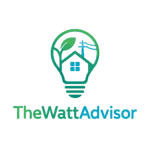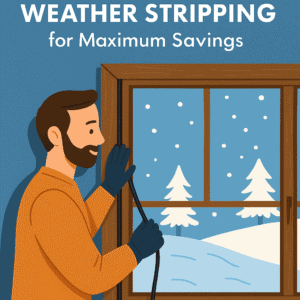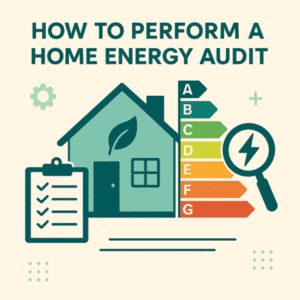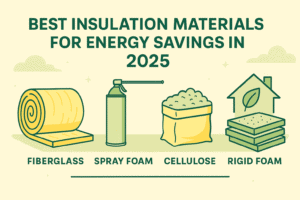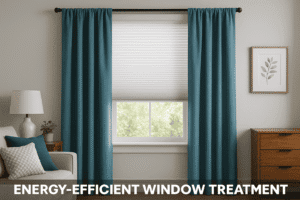DIY Home Energy Audit Checklist (Free PDF)
Are rising utility bills and drafty rooms keeping you up at night? It’s time for a DIY home energy audit checklist, a powerful, no-cost way to identify inefficiencies and start saving money. A proper audit spotlights heat losses, inefficient appliances, poor insulation, and behavioral habits that drive up energy usage. Even better, our free downloadable PDF checklist guides you step by step to uncover these issues, and gives you the tools to fix them.
In this article, you’ll:
- Learn how to conduct a room-by-room audit
- Identify common energy-wasting culprits (like drafts, leaks, old appliances)
- Use practical tools (like infrared thermometers and smart plugs)
- Get quick-fix and long-term upgrade suggestions
- Discover tips that amplify results, like smart thermostats and insulation
- Understand what to do next after completing your audit
Already completed a basic audit? This checklist helps you drill deeper for bigger savings. Whether you’re renting or own the property, this method saves energy, enhances comfort, and reduces carbon impact, all without paid professionals. Ready to start? Let’s dive in.
Understanding the DIY Home Energy Audit Checklist
Explain how the checklist works:
- Room-by-room focus
- Tools needed (infrared thermometer, candle/incense, tape measure, etc.)
- Structure: exterior envelope → HVAC systems → appliances → habits
- Free PDF: instant download as a printable and shareable guide
Internal link: Download our printable checklist now and follow along with this article, or view the full process in our Ultimate Guide to Home Energy Efficiency.
Step 1: Exterior Envelope Evaluation
a. Doors & Windows
- Use the incense/candle test to detect drafts
- Use infrared thermometer to measure temperature variation
- Test window glazes and weather stripping
- Record findings on checklist
- Solution suggestions: weather stripping, double-glazing, insulated curtains
b. Walls & Attic
- Inspect insulation levels with attic hatch inspection
- Look for gaps around wires, vents, plumbing lines
- Note defects: bare pipes or exposed sheathing
- Include insulation upgrades and caulking in checklist
c. Ventilation & Drafts
- Check attic/recessed lights, floor registers, ductwork
- Pressure door test
- Add foam tape or caulking as needed
Internal link: For more DIY sealing methods, see How to Install Weather Stripping.

Step 2: HVAC System & Distribution
a. Thermostat Setup
- Confirm location, temperature calibration, schedule programming
- Use thermostat features (smart thermostat setup)
- Add scheduling details to checklist
b. Filters & Maintenance
- Check MERV rating and dates
- Inspect ducts and seal leaks
- Include duct sealing, blower-door test note
Internal link: See tips in How Smart Thermostats Save You Money
c. Air Distribution
- Check vents, hot/cold spot mapping
- Ceiling fan reversal
- Smart vent solutions
- Add zoning suggestions to checklist
d. Heating/Cooling Systems
- Inspect condenser coils, refrigerant lines
- Heat pump defrost function, pilot light checks
- Schedule professional tune-up if necessary
Step 3: Appliance & Lighting Inspection
a. Refrigerators & Freezers
- Check age, seals, usage temperature
- Compressor cycles and energy monitor
- Suggest replacement with ENERGY STAR units
b. Laundry & Dishwashers
- Cold water use, Eco cycles, full loads
- High-efficiency detergent
- Suggest smart plug usage for standby reduction
Internal link: Related recommendations in Top 5 Energy-Efficient Appliances for 2025
c. Lighting
- Replace bulbs with LED equivalents
- Note dimmer switches, motion sensors
- Sign off on LED upgrade in checklist

Step 4: Water Heating & Plumbing
a. Tank Inspection
- Location, temperature setting
- Dip test or infrared check
- Add insulation wrap
b. Distribution
- Pipe insulation, insulation thickness
- Leaks and dripping faucets—checklist additions
c. Fixtures & Usage
- Flow rates, aerator maintenance, showerheads
- Install low-flow fixtures
Internal link: For outdoor winter readiness, see Winter Energy Saving Tips
d. Advanced Controller
Step 5: Smart Behavior & Monitoring
a. Smart Tools
- Install energy monitors and smart plugs
- Use timers, apps, patterns
- Quote ROI from Smart Gadgets Guide
b. Household Habits
- Draft checks monthly
- Temperature habits and cycle reduction
- Checklist prompts for reminders
c. Feedback Loop
- Review utility bills, compare for SUCCESS
- Re-run checklist every 6–12 months
Step 6: Long-Term Upgrade Recommendations
Based on checklist scores:
- Weather-stripping, draft sealing
- Insulation (attic, walls, floor rim)
- Smart thermostat
- LED lighting + smart plugs
- Appliance upgrades
- Water heating
- Solar battery or solar panels
Link: Solar Panels vs Solar Roofs, Ultimate Guide to Home Energy Efficiency
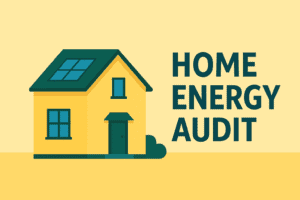
How Our Free PDF Works
Explain PDF includes:
- Printable checklist
- Space for notes/timing
- Optional scoring system
- Links back to specific guides for fixes
- Email form and download process
Putting It All Together
- Perform audit room by room
- Prioritize fixes, create phases
- Track savings and update
- Re-check after climate change or renovation
FAQs
What is included in the DIY home energy audit checklist?
Our checklist covers exterior draft inspection, windows/doors sealing, insulation levels, HVAC and thermostat checks, appliance lighting audit, water heating analysis, and behavioral habits—with easy software score guides and space for notes.
Will a DIY energy audit save me money?
Yes—DIY energy audits help identify issues that often reduce heating and cooling bills by 10–30%. With simple fixes like weather stripping, sealing, and switching to LEDs, savings often offset audit time and tool costs within six months.
Is the free PDF checklist really useful?
Absolutely—the free PDF is a walk-through guide with prompts, score sections, and links to detailed articles. It’s designed to get you actual results, not just a to-do list—download it and follow along room by room for max impact.
Do I need tools for the DIY home energy audit?
You’ll need basic tools like a tape measure, flashlight, infrared thermometer or candle, smartphone for images, and possibly a power strip or smart plug to test appliance standby usage. Most analyses take less than an afternoon.
